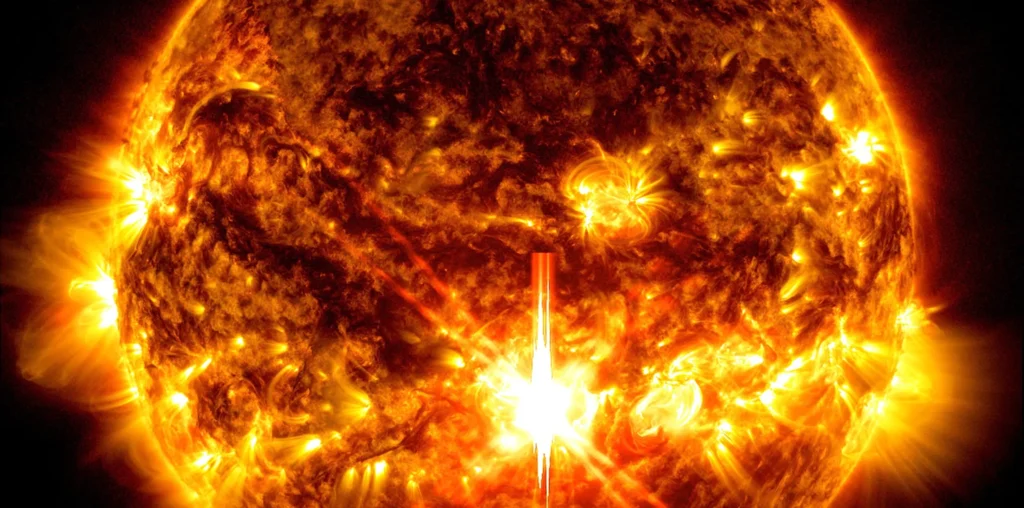
NASA
A panel of scientists from NASA and the National Oceanic and Atmospheric Administration (NOAA) has released the latest predictions for the Sun’s magnetic activity, confirming we are in the most active part of the current solar cycle. The exact peak is due sometime in the next year or so. That means a high chance in the months ahead for more flares and explosions of particles — and aurora.
Solar activity naturally ebbs and flows over a period of about 11 years in a cycle that astronomers have watched over the last four centuries. When the Sun is at its least active — solar minimum — there are very few sunspots on the solar surface and outbursts such as flares and coronal mass ejections (CMEs) are few and far between. This activity ramps up significantly in the years around solar maximum, however, driven by increasingly tangled magnetic fields.
We have good sunspot records stretching back to the mid 18th century, which enabled astronomers to begin monitoring activity with Solar Cycle 1 in 1755. Earlier this week, NASA and NOAA held a press conference to reveal an update on the progression of Solar Cycle 25, which began in December 2019.
The current cycle is stronger than the last one, but is still not as strong as activity seen in the 1950s. “Solar Cycle 25 is shaping up to be a relatively small cycle,” says Lisa Upton, co-chair of the Solar Cycle 25 Prediction Panel. Smaller, shorter cycles are more likely to have double or even triple peaks, which makes it more difficult to say for certain that maximum has occurred. “We need to be past the maximum by at least six months to a year before we can be sure which month is the peak,” she adds.
What’s more certain is that extreme space weather events will continue to pose a threat to key parts our increasingly technological infrastructure, including our fleet of satellites. Elsayed Talaat (Office of Space Weather Observations, NOAA) pointed to the dramatic events in May this year. “A barrage of large solar flares and CMEs launched clouds of charged particles and magnetic fields toward Earth, creating the strongest solar storm to reach Earth in two decades, and possibly one of the strongest displays of auroras on record in the last in the past 500 years.”
At least we saw it coming. “I think this was probably the most prepared we have been to successfully mitigate extreme space weather,” says Bill Murtagh (NOAA’s Space Weather Prediction Center).
Even then, there were significant consequences. “The agricultural industry . . . had a half billion dollar impact,” Murtagh says. Farmers rely on high-precision GPS for seed planting, tilling, and irrigation. “That weekend in May, they could not do it because of the inaccuracy of the GPS.” During extreme space weather events, changes in the ionosphere, a layer in Earth’s atmosphere, affect the signals that travel between ground and space.
“With each strong space-weather event that takes place, we learn more about both the science driving them and potential impacts of larger space weather events,” says Ryan French (National Solar Observatory), who was not involved in the Prediction Panel.
We now have an armada of missions helping to fill in the missing pieces of the puzzle, from NASA’s Parker Solar Probe to the coronagraph aboard NOAA’s GOES-U satellite, launched back in June.
Such monitoring will become even more crucial in the years ahead as the astronauts of NASA’s Artemis program venture into deep space for the first time in half a century as they head for the Moon. If we are to become a true spacefaring species then predicting and mitigating the effects of the solar cycle and space weather is a vital endeavour. Every passing solar cycle brings us one step closer to achieving it.

